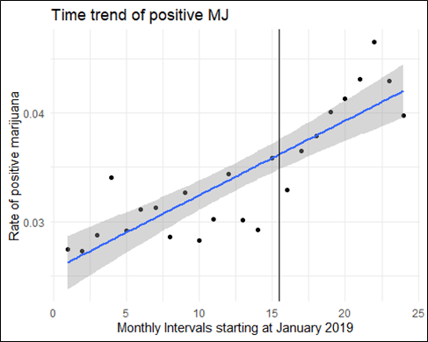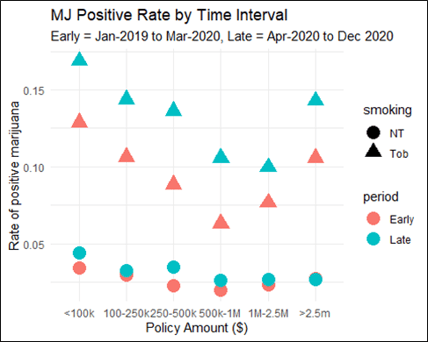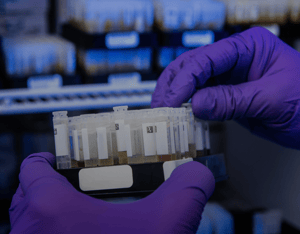Dr. Steven J. Rigatti explores marijuana use during the COVID-19 pandemic as a follow-up to earlier commentary on alcohol and tobacco use.
Introduction
Prior research from CRL demonstrated significant changes in the patterns of alcohol and tobacco use during the COVID-19 pandemic. Specifically, it was shown that smoking followed the pre-pandemic pattern of slow declines in usage rate, while the rate of detectable serum alcohol rose, most significantly in the highest face amount band.
This finding raises a similar question about marijuana: did the pattern of usage meaningfully change during the pandemic? As with alcohol, it may be that the stress of isolation and the lack of mandatory attendance at a workplace produced an increase in usage.
CRL has several clients who test nearly all applicants for marijuana metabolites at the time of application. To study usage patterns, data from such carriers were collected from January 2019-December 2020. To correspond with the imposition of stay-at-home orders in the United States, January 2019-March 2020 is designated as the “Early” period, and all subsequent times the “Late” period.
Other data collected included the age, sex, location, and policy face amount of each applicant, as well as questions about tobacco use and urine cotinine testing.
Marijuana positivity is defined as the detectable presence of delta-9-THC in the urine. Generally, this method detects very recent use (1–2 days) or considerable chronic use. It does not detect cannabidiol (CBD) or other marijuana alkaloids.
Overall Time Trend
The figure below shows the rate of marijuana positivity by month from the start of the study. A vertical line marks the transition from the Early to the Late period. This clearly shows a rising trend with an abrupt transition.
 <
<Other Correlates
It has been previously noted that marijuana positivity tends to correlate strongly with tobacco use. The data in this study confirm this. The rate of marijuana positive among smokers (admitted or cotinine positive) was 11.8%, while among non-smokers it was 2.9%. While there is also a trend toward higher usage in lower face amount groups, the difference is not as stark.
The figure below illustrates these differences and demonstrates that nearly all face amount and smoking status combinations saw an increase in marijuana positivity between the early and late periods.

Modelling
To verify that the effect of the pandemic was independent of other variables, a logistic model was fit. Controlling for age, sex, and face amount, the Late period was associated with an odds ratio of 1.46 (p < 10^-16).
Discussion
This study demonstrated that marijuana positivity increased significantly from the early to late period, and this effect was independent of other variables. It is not strictly possible to say that this increase was caused by the pandemic, since a control group that did not experience the pandemic does not exist. However, the timing of the increase and the similar trend found for tobacco use do lend plausibility to the overall likelihood that our clients have sought refuge in the use of both marijuana and alcohol during a difficult time in our lives.
About the Author
Dr. Steven J. Rigatti is a consulting medical director with Clinical Reference Laboratory, with 12 years’ experience in the life insurance industry. He is the current chair of the Mortality Committee of the American Academy of Life Insurance Medicine.






